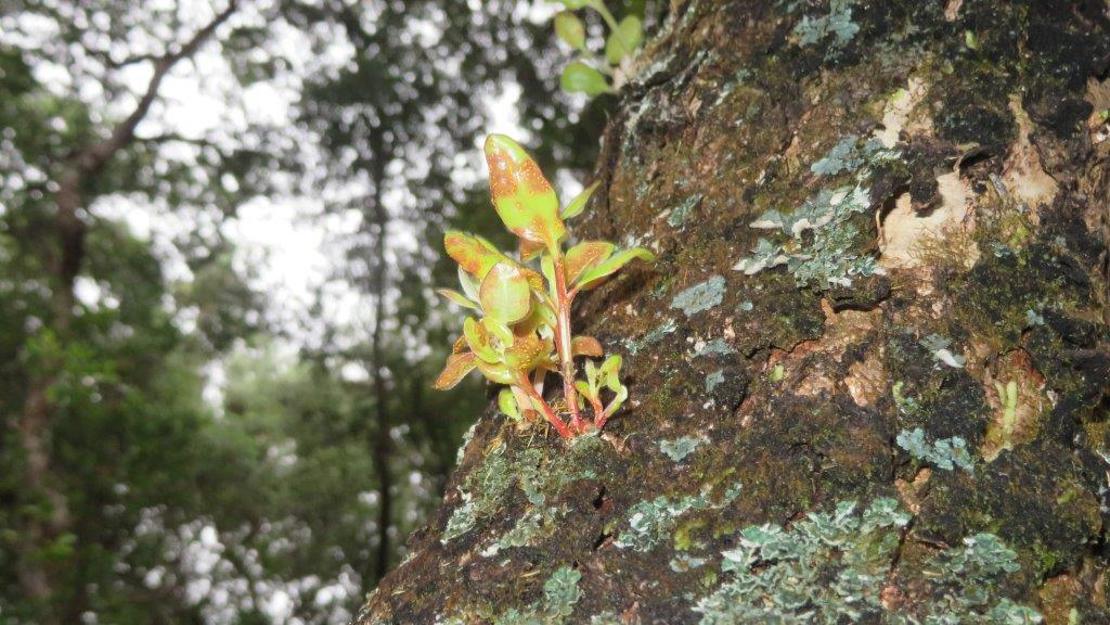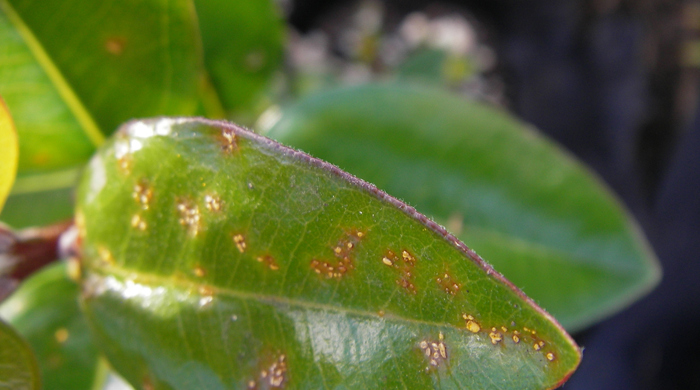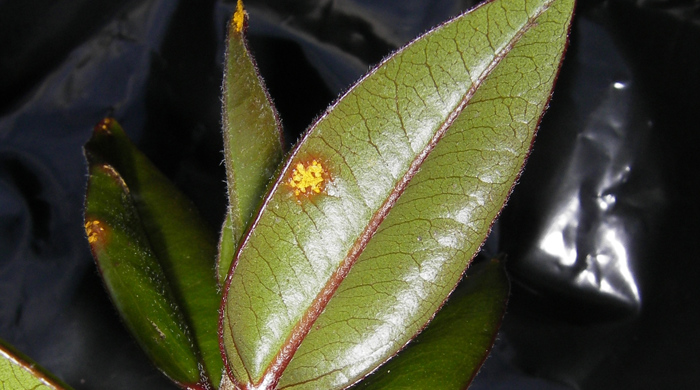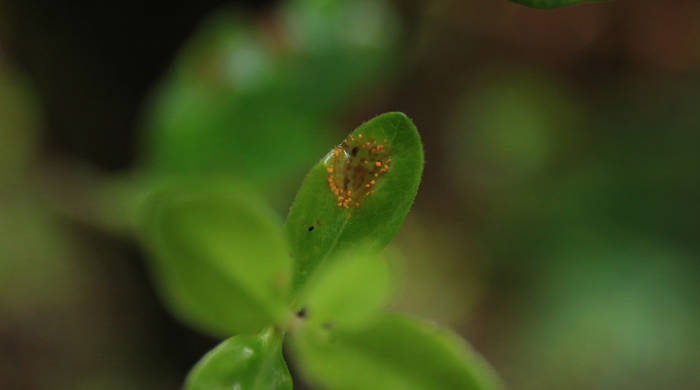Austropuccinia psidii
Myrtle rust
Also known as:
Guava rust
Family: Sphaerophragmiaceae
Origin: South America

General description
Myrtle rust is a fungal pathogen, infecting hundreds of species in the family Myrtaceae (myrtles).
It is able to be spread by wind, insects and potentially other animals that visit plants, as well as through human-mediated transport of infected plants. Infected trees show lesions on soft tissue such as young leaves, growing tips, fruit and flowers, with eruptive yellow pustules.
Ultimately the host may die due to inability to replace tissues. Reproduction and recruitment can be impacted due to the loss of flowers, fruit and seedlings.
What you need to know
To help protect our environment:
- You must not distribute or release myrtle rust.
- Assist the effort to understand and track myrtle rust in New Zealand by uploading any observations to the iNaturalist website.
- If you are growing Myrtaceae, follow the NZPPI protocols.
- Consider using non-myrtle alternatives to popular but susceptible exotic hedging species such as lilly pilly. See Myrtle Rust for more information.
Habitats
Infects soft tissues of myrtles such as pōhutukawa, ramarama and rōhutu.
Impact on environment
Risk of decline among ecologically important Myrtaceae such as the highly susceptible species of Lophomyrtus ramarama and rōhutu. Potentially increasing impacts on other susceptible species such as pōhutukawa and maire tawake if spore levels increase over time.
Species not currently showing widespread infection may become impacted as spore levels increase and/or other strains of myrtle rust reach New Zealand.
Control
Recommended approaches
If you have found myrtle rust on your plants, you may choose to control the infections by following the guidelines at Myrtle Rust in New Zealand.
For more information on myrtle rust, visit the Myrtle Rust website or contact Auckland Council at pestfree@aucklandcouncil.govt.nz.






